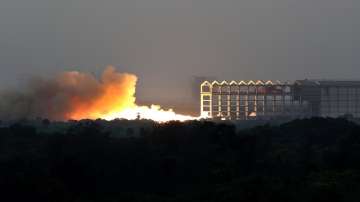The Indian Space Research Organisation (ISRO) on Friday (May 13) went a step ahead in its human space mission programme 'Gaganyaan' by successfully completing the static test firing of the solid fuel powered rocket booster engine.
The booster engine is part of the Geosynchronous Satellite Launch Vehicle MkIII (GSLV Mk III) rocket that would carry Indian astronauts to space.
When and where the test was conducted?
The test was conducted at the Satish Dhawan Space Centre (SDSC) in Sriharikota, Andhra Pradesh, it is learnt.
The 135 seconds test firing of the booster 'HS200' happened in the morning and is part of the human rating process of the rocket GSLV Mk III.
The GSLV Mk III rocket is a three staged vehicle.
The first stage is powered by solid fuel, the second by liquid fuel and the third is cryogenic stage powered by liquid hydrogen and liquid oxygen.
(With agencies inputs)
Also Read: OneWeb inks pact with ISRO rockets for satellite launches
Also Read: Maharashtra: ISRO to check objects that fell from skies in Pawanpur village
Latest India News

